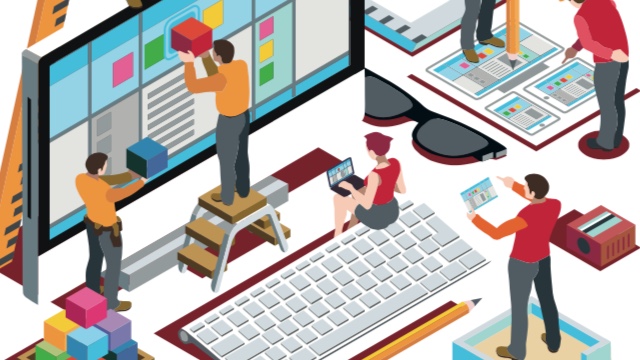10 ways to improve your UX portfolio

First impressions count, and your portfolio is often the first thing that people will get to see, and the only thing between you and your next web design job. That means that creating the right kind of UX portfolio, which is a true representation of your skills, is vital.
Telling a story, not oversharing and remembering that your portfolio has users are just some of the things to keep in mind when attempting to create portfolio. Here are ten ways you can improve your UX portfolio, and ultimately get a better job.
And if you're after general portfolio inspiration? Check out our list of inspiring portfolio examples.
01. Tell a story
Working with a client or stakeholder on their product is a fascinating story. You and your team of heroes face a challenge; an unresolved point of tension – your client’s product is failing and its users are suffering. Using your complementary skillsets, will your team successfully navigate business constraints, timelines and technical debt to save the day? There lies the potential for a wonderful story arc – be the conduit for that drama, detailing the highs and lows, and ensuring you grab the reader’s attention.
02. Make it visually compelling
The work we do is visual: users make sense of the products and services we design through our explicit visual hierarchies and relationships. Granted, great UX is more than eye-catching buttons and slick interactions, but taking the time to ensure your portfolio demonstrates a basic grasp of typography and layout will convince whoever picks up your portfolio that you’re confident in what is predominantly a visual medium.
03. Don’t overshare
Mastering good communication is about knowing how much to share and when. Your portfolio should strike a balance between sharing enough detail on the problem you faced, your process, deliverables and outcomes, whilst not detailing every single meeting, conversation or pixel pushed in pursuit of the outcome. This takes practice — being aware of it is a great start!
04. Think about the user

Your portfolio is an experience too! Take some time to understand and empathise with those browsing your portfolio: what would you like them to know? How would you like them to feel? What actions should they take when they’re finished? Remember to ask for feedback on your portfolio from your peers or even recruiters. Just like your client’s products, your portfolio will benefit from constant pruning and iteration.
Daily design news, reviews, how-tos and more, as picked by the editors.
05. Be honest
It is totally fine if, after testing or shipping your solutions, you find they didn’t have the impact or outcomes you’d hoped. In fact, humility and the ability to self-reflect on the weaker points of your process humanises you to those reviewing your portfolio. Just make it explicit how you would change your approach next time!
06. Share a bit of you
It’s your portfolio after all. Reviewers are looking, first and foremost, for evidence of your ability to apply a human-centered design process to problem solving, but they’re also interested in hiring a decent, good-natured human being. Share a bit about what you like to do in your down time or on side projects to reassure the reviewer you’re not a UX robot.
07. Take lots of photos
Photos can speak a thousand words, elevating a dry process write-up to an engaging human-centered story. Take lots of photos during workshops and user testing sessions because they’ll come in handy when detailing your process in your portfolio case studies. Get your team to take to take photos too or you’ll be the only one not in them!
08. Write newspaper headlines, not product names
This is a personal choice. We love to see portfolio case studies with titles in the tone of a salacious tabloid headline. A case study that simply uses the client or product’s name is a dull point of entry to a potentially exciting journey. The best examples capture the essence, drama and outcomes of the project in one pithy sentence. This is a skill that comes with practice but get it right and you’ll have portfolio reviewers hastily clicking to find out more.
09. Make it for mobile

This should go without saying but being able to browse your portfolio on small screen devices is a must. I’ve seen a number of portfolios from experienced and talented candidates whose portfolios render beautifully on large screens but degrade very ungracefully on smaller screens. If users are browsing your portfolio on a small screen, there are also other challenges to consider such as limited attention spans and different interaction expectations. Plan your content accordingly.
10. Build your own portfolio
You work in a digital medium: it is simply not enough to provide your portfolio as a printable document. Squarespace, Wix and GoDaddy are all simple, flexible and affordable website builders so there’s really no excuse to not have a digital presence. If you really want to pique your future employer’s attention, design and build your portfolio yourself. Learning to code has never be easier with online courses from the likes of SuperHi.
This article was originally published in issue 285 of creative web design magazine Web Designer. Buy issue 285 or subscribe to Web Designer.

Steven Jenkins is a freelance content creator who has worked in the creative industries for over 20 years. The web and design are in his blood. He started out as a web designer before becoming the editor of Web Designer magazine and later net magazine. Loud guitars, AFC Bournemouth, Photoshop, CSS, and trying to save the world take up the rest of this time.
